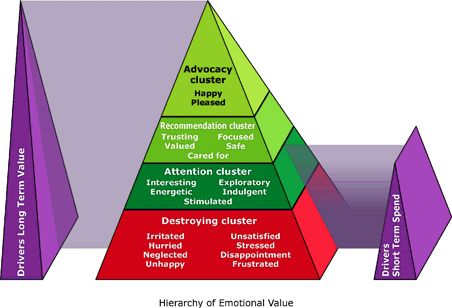When we interact with an artifact (anything that has been designed) we can experience five distinct frames of mind including: agitation, tolerance, resonance, acceleration and integration. So something either irritates me, bores me, really clicks with me, speeds up my thinking and emotions or literately makes the thoughts and emotions I am having possible in the first place. This last state – integration, implies a profound coupling between the functionality of the artifact and the cognition of the user. For example, a brain-computer interface may let me move a cursor on a computer screen by thought alone. Without the brain-computer interface (artifact) I cannot have the cognition to move the cursor on the computer screen. It is the two things working together in an integrated system that give rise to the cognition. In this way, cognition is actually extended beyond the skull to include the artifact and aspects of the environment.
Designing to achieve this fifth or extended state of mind – integration between user and artifact – may seem exotic (how many of us use brain-computer interfaces) but an emerging position in the philosophy of mind argues it may be more common place than we think.
Andy Clark, a philosopher has an exciting new book coming out, Supersizing the Mind: Embodiment, Action and Cognitive Extension, where he argues that certain forms of cognition are so entangled with artifacts in the environment that we need to think of mind as extended not “brain bound”. That is the mind extends beyond the brain and the body into the environment by the way it is tightly coupled to objects and events. For example, a scientist who uses pen and paper to write, think and develop insights into nature. Pen and paper are far more mundane than brain-computer interfaces but in the rights hands may in fact generate an extended frame of mind.
In my cognitive design class I challenge students to come up with examples of how this extended state of mind works in our everyday world. Common responses include thinking in the shower or while listening to music. Does the flowing water or sound actually integrate with and extend cognition beyond the body? I’m not sure but I hope Andy Clark’s new book will help me figure that out. In the meantime, I must agree with the publisher’s write up:
“The importance of this new perspective is profound. If our minds themselves can include aspects of our social and physical environments, then the kinds of social and physical environments we create can reconfigure our minds and our capacity for thought and reason.”





